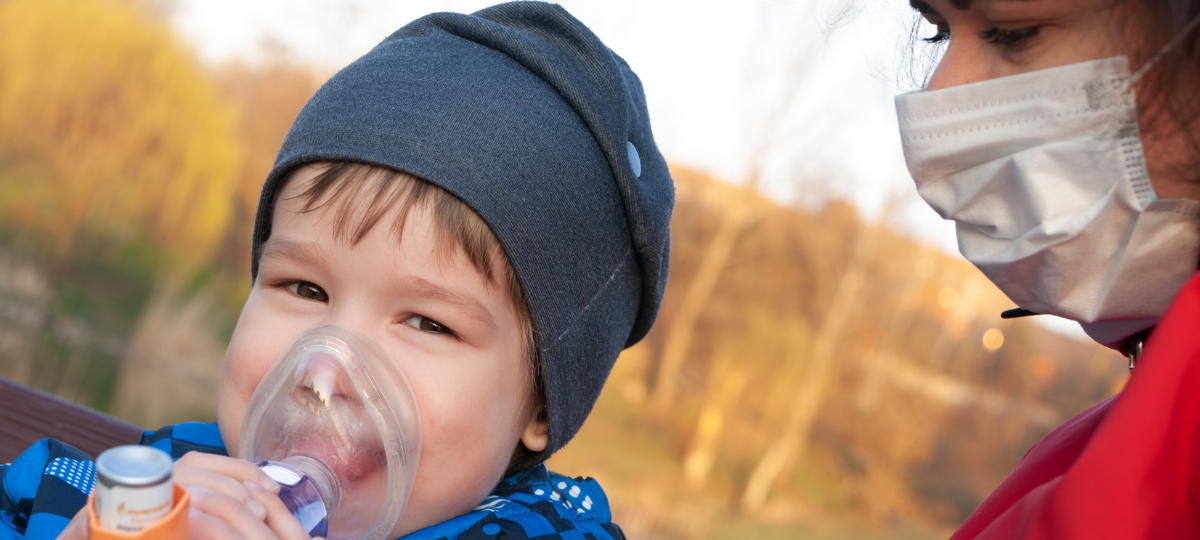Continuing Education
Research and Massage Therapy
Learn how to evaluate and incoporate research results into your massage practice.
Is massage therapy beneficial for children with asthma?
By Martha Brown Menard, PhD, LMT, August 1, 2021

Does massage therapy offer any benefit to children suffering from asthma?
Asthma is a chronic inflammatory disease of the respiratory system and is characterized by recurrent episodes of bronchoconstriction and spasm of the smooth muscle in the airways. Affecting more than 300 million people, asthma is the most common chronic disease of childhood worldwide.
Low-income communities bear a disproportionate burden, with greater frequency and severity of symptoms that are exacerbated by underdiagnosis, undertreatment and increased exposure to air pollution. In western countries, the financial burden to a patient living with asthma ranges from $300 to $1,300 per patient per year, posing a significant economic burden on children and their families.
Massage has shown promise as an integrative therapy for asthma, but it has not been widely studied in children living with this condition. This systematic review included a meta-analysis of the overall effectiveness of massage therapy with subanalyses of two objective measures of functional capacity.
Five databases were searched using the terms “asthma,” as well as “massage,” “manipulation” or “an mo.” Search terms for Chinese databases included “xiao chuan” and either “tui na” or “an mo.” A total of 208 studies were retrieved.
Inclusion criteria were specified in advance and included: 1) an RCT design; 2) participants had been diagnosed with asthma and ranged between 6 months to 15 years old; 3) the treatment group compared massage therapy (alone or combined with other basic therapies) to a control group that did not include massage; and 4) outcomes measured included the results of the pulmonary function tests FEV1 and PEF. FEV1 refers to the forced expiratory volume of air in one second while PEF refers to the peak or maximum expiratory flow, which is a quick measure of the amount and rate of air that can be forcefully breathed out of the lungs.
Two evaluators independently extracted data, and any disputes were resolved through discussion. Risk of bias was assessed using the Cochrane Collaboration standards for systematic review and Revman software, with each study rated as high risk of bias, low risk of bias, or unclear risk of bias. A total efficacy score across all studies included in the meta-analysis was calculated.
Of the 208 studies retrieved, 14 met the specified inclusion criteria. The data from the studies were pooled and a meta-analysis conducted. Across all studies, a total of 1,299 participants were included. An analysis of the risk of bias showed varying results. While randomization methods showed a low risk of bias overall, blinding was an issue where the risk of bias was unclear, likely due to the nature of the massage intervention. Incomplete data and selective reporting of results was judged to be at low risk of bias.
In terms of overall efficacy, data was aggregated from 12 studies for a total of 1,099 patients, comparing massage therapy with or without basic treatment to a control group. In this analysis, massage appeared to be a more effective intervention, with a relative risk ratio of 1.19, p = .001. Relative risk is the ratio of the probability of an event, in this case symptom improvement, occurring in the exposed group that received massage therapy versus the probability of the event occurring in the non-exposed group, which did not.
In terms of objective improvement of pulmonary function, another analysis of four studies totaling 365 participants reported the effect of massage on forced expiratory volume in one second (FEV1). The effect size or standardized mean difference (Cohen’s d) was .68, p = .002. An analysis of three studies that included 271 patients found the effect size on massage therapy on maximal expiratory flow (PEF) was .83, p = .001.
Relatively few of the included studies could be included in the meta-analysis of the objective symptom outcomes. Areas of the body massaged, as well as the frequency and duration of the massage, all varied across the 14 studies included in the meta-analysis. The specific massage techniques used were not described, so it is impossible to know how comparable these were across the studies. No description of the therapists’ training or experience is described. Studies were all conducted in China with Chinese participants, which may limit the generalizability of the findings. No follow-up data was reported in any of the included studies, so the duration of any improvement is unknown.
Keeping in mind the limitations described, these results provide some support for the use of Chinese massage techniques generally for children and adolescents with asthma. However, more research is needed.
This was a systematic review and meta-analysis conducted according to the strict standards of evidence as defined by the Cochrane Collaboration. While it is possible for data analysis to be blinded in massage studies, it is much more difficult to blind those performing the massage intervention and the study participants who are receiving it. This study points to the need for innovative research designs that are rigorous but flexible in clinical trials of massage therapy, and for the need to always assess whether any measures taken to blind participants and researchers actually worked.
1. Wu J, Yang XW, Zhang M. "Massage Therapy in Children with Asthma: A Systematic Review and Meta-Analysis." Evid Based Complement Alternat Med. 2017;2017:5620568.
2. Fattah MA, Hamdy B. "Pulmonary functions of children with asthma improve following massage therapy." J Altern Complement Med. 2011 Nov;17(11):1065-8.
3. Hung YC, Hung IL, Sun MF, Muo CH, Wu BY, Tseng YJ, Hu WL. "Integrated traditional Chinese medicine for childhood asthma in Taiwan: a nationwide cohort study." BMC Complement Altern Med. 2014 Oct 10;14:389.